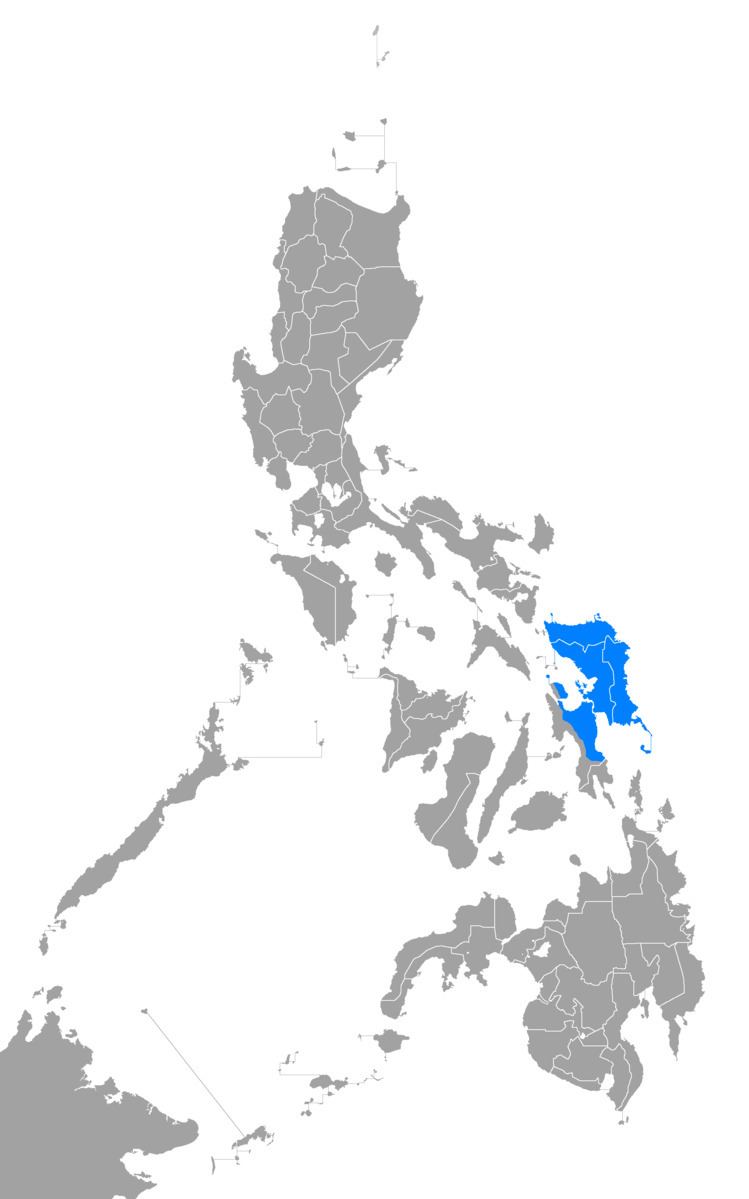 | ||
Native speakers 3.4 million (2015)5th most spoken native language in the Philippines Language family AustronesianMalayo-PolynesianPhilippineCentral PhilippineVisayanCentral VisayanWaray Dialects Standard Waray (Tacloban dialect), Northern Samar dialect, Calbayog dialect, Culaba-Biliran dialect, Abuyog dialect and other 20 identified dialects and subdialects | ||
Waray is the fifth-most-spoken native regional language of the Philippines, specific to the provinces of Samar, Northern Samar, Eastern Samar, some parts of Biliran, and the north-east of Leyte island (surrounding Tacloban). It is the third most spoken language among the Visayan languages after Cebuano and Hiligaynon (Ilonggo). The language name comes from the word often heard by non-speakers, "waray" (meaning "none" or "nothing" in Waray); similarly, Cebuanos are known in Leyte as "mga Kana" and their language as "Kana" (after the oft-heard word "kana", meaning "that" in the Cebuano language).
Contents
Dialects
Linguist Jason Lobel (2009) considers there are 25 dialects and subdialects of Waray-Waray.
Waray-Waray is characterized by a unique sound change in which Proto-Bisayan *s becomes /h/ in a small number of common grammatical morphemes. This sound change occurs in all areas of Samar south of the municipalities of Santa Margarita, Matuginao, Las Navas, and Gamay (roughly corresponding to the provinces of Samar and Eastern Samar, but not Northern Samar), as well as in all of the Waray-speaking areas of Leyte, except the towns of Javier and Abuyog. However, this sound change is an areal feature rather than a strictly genetic one (Lobel 2009).
Most Waray dialects in northeastern and eastern Samar have the close central unrounded vowel /ɨ/ as a reflex of Proto-Austronesian *e.
Usage
Waray is one of the 19 officially recognized regional languages in the Philippines and used in local government.
It is widely used in media particularly in television and radio broadcasts. However, print media in this language are rare because most regional newspapers are published in English. The language is used in education from kindergarten to primary level as part of the Philippine government's K-12 program where pupils from Kinder to Third grade are taught in their respective indigenous languages.
Waray is also used in the Eucharistic celebrations or Holy Masses in the Roman Catholic Church and in the worship services of different Christian sects present in the region. Bibles published in Waray are also available.
Loanwords
The language of Waray has borrowed vocabulary extensively from other languages, specially from Spanish. These words are being adopted to fill lexical gaps of the recipient language. Spanish colonialization introduced new systems to the Philippine society.
